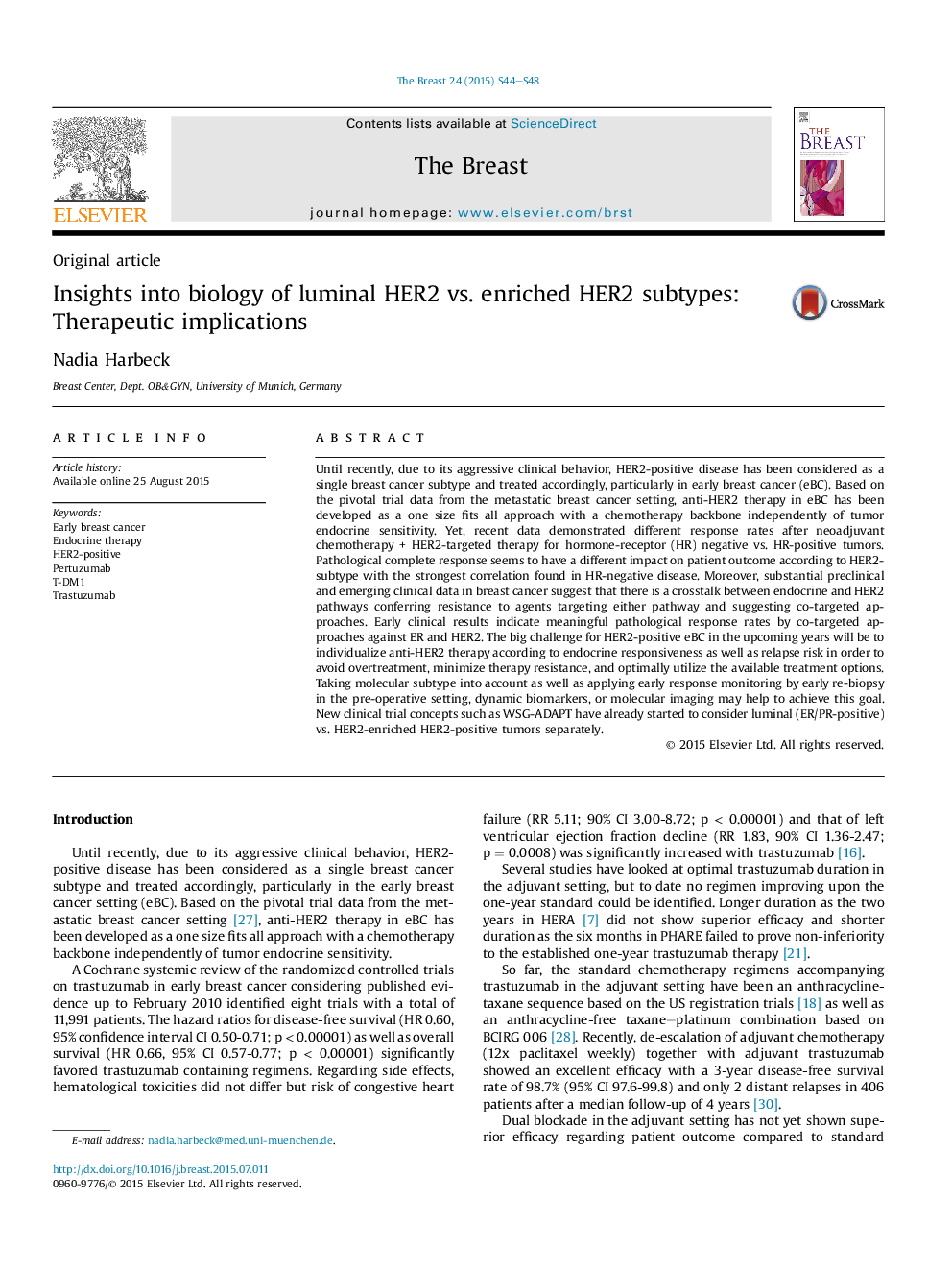| Article ID | Journal | Published Year | Pages | File Type |
|---|---|---|---|---|
| 6169760 | The Breast | 2015 | 5 Pages |
Until recently, due to its aggressive clinical behavior, HER2-positive disease has been considered as a single breast cancer subtype and treated accordingly, particularly in early breast cancer (eBC). Based on the pivotal trial data from the metastatic breast cancer setting, anti-HER2 therapy in eBC has been developed as a one size fits all approach with a chemotherapy backbone independently of tumor endocrine sensitivity. Yet, recent data demonstrated different response rates after neoadjuvant chemotherapy + HER2-targeted therapy for hormone-receptor (HR) negative vs. HR-positive tumors. Pathological complete response seems to have a different impact on patient outcome according to HER2-subtype with the strongest correlation found in HR-negative disease. Moreover, substantial preclinical and emerging clinical data in breast cancer suggest that there is a crosstalk between endocrine and HER2 pathways conferring resistance to agents targeting either pathway and suggesting co-targeted approaches. Early clinical results indicate meaningful pathological response rates by co-targeted approaches against ER and HER2. The big challenge for HER2-positive eBC in the upcoming years will be to individualize anti-HER2 therapy according to endocrine responsiveness as well as relapse risk in order to avoid overtreatment, minimize therapy resistance, and optimally utilize the available treatment options. Taking molecular subtype into account as well as applying early response monitoring by early re-biopsy in the pre-operative setting, dynamic biomarkers, or molecular imaging may help to achieve this goal. New clinical trial concepts such as WSG-ADAPT have already started to consider luminal (ER/PR-positive) vs. HER2-enriched HER2-positive tumors separately.
